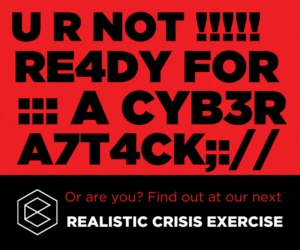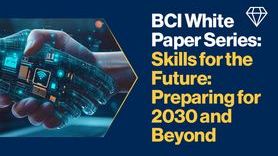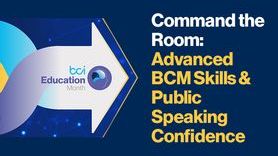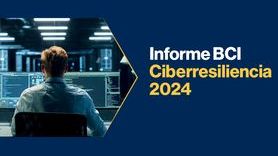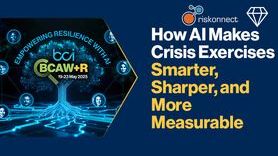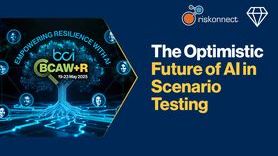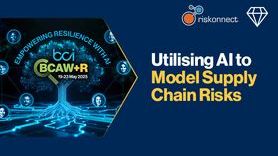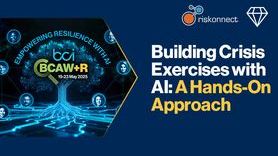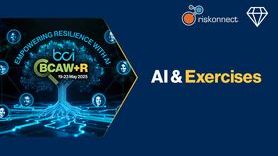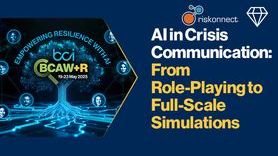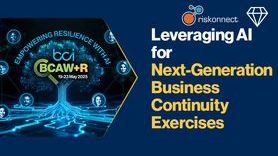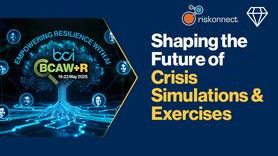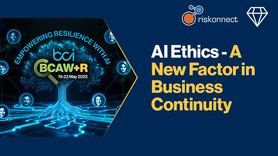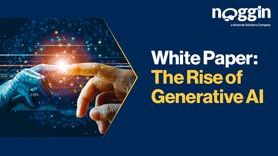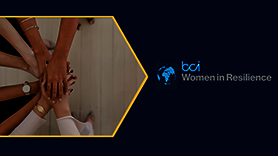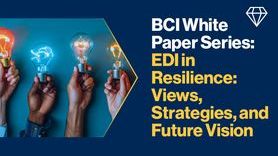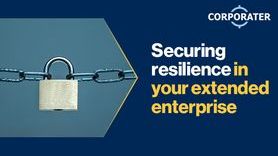How can BC and Resilience professionals maintain their own resilience during a crisis?
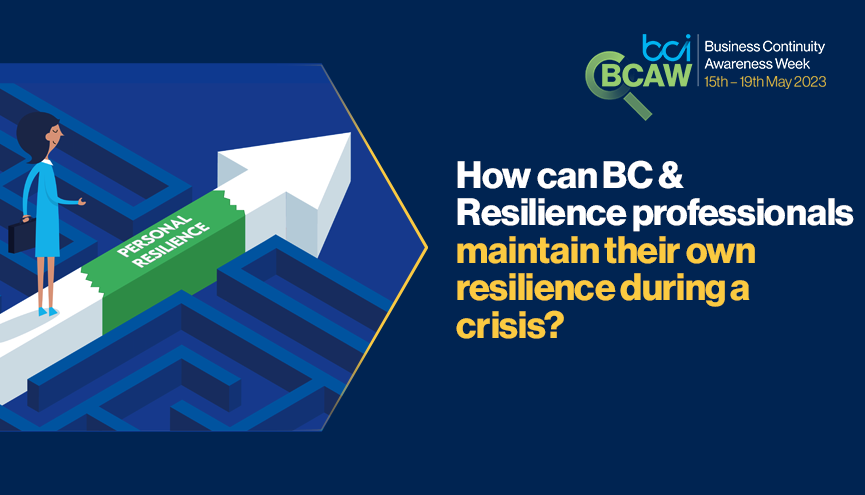
Since we will be exploring personal and employee resilience in this article, it is important that we understand how we are defining these aspects of resilience in the context of this piece.
Dr Aarti Anhal, Founder of before nine, describes personal resilience as “our ability to be flexible in how we think, how we feel and how we respond when we're faced by a disruption or by an extended period of pressure.” These disruptions or pressures could be related to your job, your personal relationships, potential illnesses, etc.
Employee resilience is about how we “navigate and manage everyday stresses at work, how we recover and rebound when things go wrong, as there are setbacks, issues, and problems that take place in organizations every minute of every day.” It’s also about how we prepare for the future, based on our personal lessons learnt.
How can crisis situations or large-scale incidents, such as COVID, for example, impact on the resilience of professionals?
Many BC and Resilience professionals will feel like they have been truly tested throughout the past 3 years, as a result of the COVID-19 pandemic and its various implications for organizations. They may have also seen their role within the organization change.
Despite the organization’s approach to BC or Resilience before the pandemic, the importance and integral nature of these functions suddenly became clear to a wider and more receptive audience. “Resilience professionals became recognized as the glue in supporting the facilitation of their organization’s response,” says Dr Anhal.
It’s important to explore how this change and the scale of this challenge impacted upon the personal resilience of these professionals. “People were absolutely shattered,” says Dr Anhal. “They had no sense of their ability to control their time, they were completely at the beck and call of others.” While, of course, this elevation of their role was a great opportunity for many professionals, as their voice and experience was now valued by senior management within the organization, this elevation also comes with a significant amount of pressure – the type of pressure referenced within our definitions of both personal and employee resilience.
Dr Anhal explores this by saying: “I think anyone working in this space will have found the first six months of the pandemic truly hard. It felt like the first time our community recognised just how important the wellbeing of Resilience professionals, i.e. their ability to feel good and function well, is to their capability to sustain their performance over the longer term.”
However, the challenge to our resilience is far from over. Last year, many professionals struggled with the sense that things weren’t getting back to normal in their organization, even after the effects of the pandemic had lessened. Although, this expectation has started to change. “I think the Resilience professional has become much more forward-looking in 2023 because we now realise that there is no finishing line. We're never going back to the way we were, our organizations are never going back to the way they were and it's now about how we take advantage of the opportunities that being a Resilience professional and being seen as a trusted person in the business now offers,” says Dr Anhal.
Indeed, while Resilience professionals within an organization may have felt drained by the experience of the pandemic, it may have also encouraged others within the organization to recognize how they perform under pressure. These people now have an experience where they have learnt how they respond to and navigate challenges and stress, and also understand the resources they now rely on to fuel their resilience personally and in the workplace. This idea of learning about our own response to crisis is one we will return to later in this article, but hopefully, this experience can encourage a new sense of optimal performance. “Optimal performance comes from knowing ourselves, knowing what fuels us, knowing what energizes us, knowing what drains us, and how to use this to sustain a high level of performance” adds Dr Anhal.
How can Resilience professionals prepare themselves to handle a crisis situation?
We should also explore how Resilience professionals can prepare their resilience for the demands of a large-scale crisis event. We discussed this with Dr Anhal, particularly in relation to measures that could have been put in place to preserve personal and employee resilience if we were aware that COVID was on the horizon in early 2020.
Dr Anhal reflects that the first point would have been to pace ourselves. “This will be a long-term issue and you're going to need to be able to sprint at various points during this long marathon. So how are you going to pace yourself? And what support are you going to ask for from your team or from your own manager to help you pace your delivery?”
The next priority would be to not spread yourself too thinly or expect to be involved in everything. Rather, consider what you are going to prioritise from a work perspective. This idea raises a theme which comes up repeatedly in our conversation with Dr Anhal, which is the importance of the collective and being part of a team when it comes to fuelling our personal and employee resilience.
“I think Resilience professionals are naturally supportive people who want to be of service. But, ultimately, you can't be the one to get your sleeves rolled up every time. We have to drop the ‘superhero’ cape, and we also have to balance the kindness we often over-use by taking on things that we shouldn’t, by recognising that we’re not being kind to ourselves or fair to others in the organization who are making the time to do the work themselves” she says.
A final tip would be to consider how you, as a Resilience professional, are going to manage your day. As dedicated professionals in a long-term crisis or incident, many will say that they don’t take breaks during their working day, but we have all seen the potential long-term implications of this over the past few years, e.g. burnout. “I think boundary setting is something I would have talked about earlier on [before the pandemic]. I would have said, look, everyone in the pandemic is going to learn to set boundaries. How are you going to set yours?”
Creating a culture which supports both personal and employee resilience
When we talk about creating a culture of resilience within an organization, leadership is often a much-discussed factor. Indeed, studies have shown the link between mental health and a person’s job/management[1] and there is much literature on the nature of leadership in a resilient organization.
In our conversation, Dr Anhal notes that many leaders recognise the importance of personal resilience because they have had this very resilience tested, especially during the pandemic. However, before working on building a culture of resilience, it is important to clarify what exactly resilience means to these leaders.
“You can be working for a Head of Finance who thinks that resilience is just about ‘toughing it out’. That it’s ‘mind over matter’.” In this situation, if you work in finance, this is what resilience looks like. “Whereas, in the Operations team, you have a leader who thinks that resilience is about flexibility, agility, and finding different ways of doing things.” The issue here is that you aren’t creating a singular resilience culture within the organization.
“You have lots of people who are expecting their parts of the organization to be resilient in very different ways. So, firstly we need to help leaders to have a common understanding of what the human essence of resilience actually is – and how it shows up personally, and in the context of being an employee.”
Leaders also have a role to play when it comes to considering how the organizational context and operational environment fuels or undermines employee resilience. For example, many organizations are currently operating with too many demands, insufficient resources, and a requirement to deliver at pace, contributing to excessive workloads. It also doesn’t help that some organizations may have lost or had to reduce staff numbers during the pandemic.
In this situation, Dr Anhal says that leaders need to reflect: “How are we making it harder for our people to sustain their resilience at work? And, how do we not only think about our own resilience as leaders, but also how wellbeing and resilience play such a vital role in enabling the performance of our incident and crisis teams?”
Only once this has been considered, can we -begin to focus on what individuals need to do to enable their resilience. “There still isn't enough focus on what the system needs to do, or how the system and the leaders need to change.”
So, what can we do collectively?
Resilience culture during a crisis
Before the incident takes place, there is a lot we can do to prepare our Incident Management community to use their strengths, skills and resources to sustain a level of resilience. This includes helping them to understand how they generally respond to pressure, how they could moderate some of their behavioural tendencies (e.g. perfectionism, micro-management, self-sacrifice) and how to spot when they or others are in difficulty, whether physically, mentally, or emotionally.
We need to ask ourselves if we know what it looks like for a colleague to be under considerable stress, or if we would notice if our colleague’s behaviour changes. How are we checking in with people in a way that enables them to feel comfortable about being open and showing vulnerability? Coming back to pace, how do we pace ourselves and set expectations for how others pace themselves in terms of breaks, meeting frequency, and duration?
Finally, post-incident, it’s important that those involved in the incident recognise that they've been through something. “Whether it's the resilience team who facilitated the response or it's those bronze, silver and gold teams — how do they recognize in themselves that they are fatigued?” asks Dr Anhal, who has noticed that there are still teams in organizations across sectors who say that they haven’t been given the dedicated time and space post-pandemic to reflect on their experiences, consolidate their personal learning, and work on any unresolved issues. “There are great debriefs out there, but they usually focus on the process and the plan, not how we as human beings came together and solved this difficult thing,” she says.
Of course, this becomes critical in the event of a traumatic incident when those involved may be experiencing post-traumatic stress. Time is of the essence here, given the different interventions and debriefs required at specific intervals post-exposure to trauma. According to Dr Anhal, too few organizations have thought in advance about the resources they need to put in place to ensure they have the right specialist support to follow up immediately after a traumatic incident. “How are Resilience professionals working with Occupational Health and HR to ensure that anyone that's been involved in this incident has support? Saying we have an Employee Assistance Programme (EAP) just isn’t enough”, she says.
What resources should be available for those professionals dealing with a crisis?
As we’ve now seen, developing a culture of resilience requires a combination of structures, processes and resources. Dr Anhal sees the need for Resilience professionals to work closely with stakeholders in different functions, including People and Culture, Learning & Development and Wellbeing, alongside leadership, to understand how these stakeholders can help employees develop the smart skills to be able to navigate change and complexity and, when they need to be involved, the next incident or crisis.
Dr Anhal continued by explaining that one of the biggest gifts you can give someone is the ability to understand what their own skills, strategies, and resources are, as well as helping them to see what fuels their own resilience and what drains it. “Then they can come up with their own toolkit, know how to use it and also know how to adapt their approach when those skills and strategies aren’t working.”
Since the pandemic tested the resilience of us all in many different ways, we can now reflect on this time and use the lessons learned to improve our personal and employee resilience toolkit. Indeed, while the value of processes and frameworks in resilience in general can’t be denied, Dr Anhal believes that “you can't process or framework your way through personal resilience.” In an ideal world, there would be 1-2-1 work with people to help them reflect on their resilience toolkit, but this is unlikely to be scalable. With this, Dr Anhal suggests an alternative: “Gather colleagues in a room and facilitate these kinds of discussions, so everything we've experienced and learned from the pandemic [or other crisis within the organization] — the good, the bad and the ugly — can be used to inform how we resource and support our resilience moving forwards.”
“We need to think about how we're actually creating the time and space to support people pre-incident, mid-incident and post-incident, and we need to think about how we engage leadership in a conversation and a recognition around the fact that it is not about individuals alone being resilient it’s about creating the conditions to enable them,” concludes Dr Anhal.
[1] https://www.ukg.com/resources/article/mental-health-work-managers-and-money?ms=1785.7142857142858


